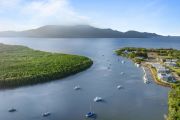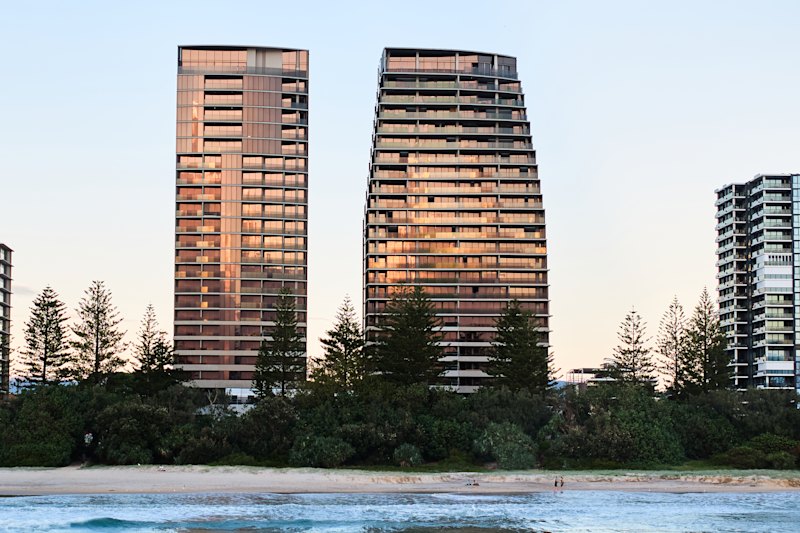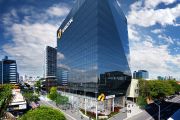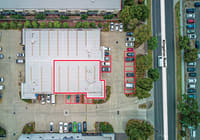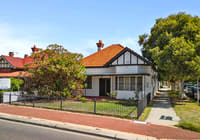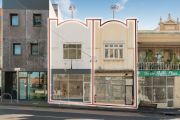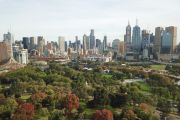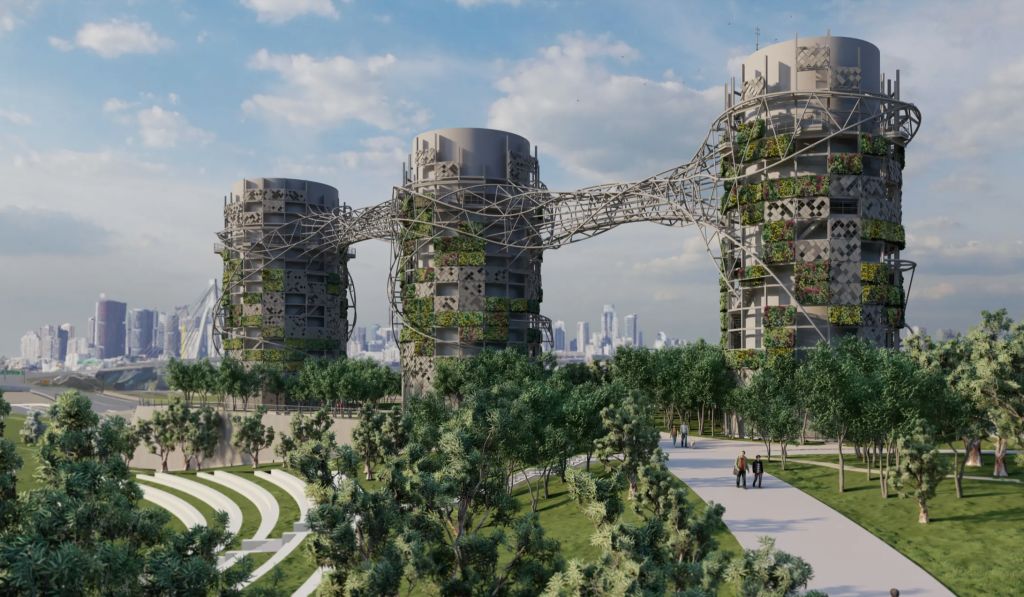
Why Sydney's giant chimneys will be covered in steel ‘vines'
Spiderman is coming to Rozelle. Well, if not the Marvel action hero himself, a web-like sculpted steel framework, weaving and twisting around three giant ventilation towers above inner-western Sydney’s new WestConnex interchange.
The metal tendrils, along with panels of vertical greenery and zinc patterns perforating the shell of 30-metre-high chimneys, are intended to break up their bulk and soften the structures channelling fumes out of the underground highway network below.
“The idea is to create an interweaving sculptural framework like an organic growth, where nature is taking over the built form as though an old ruin has now been consumed by this new natural system,” says Chris Fox, the artist behind the work.
The towers will stand over a nine-hectare public parkland that will be created adjacent to Rozelle Bay light rail stop and above the underground interchange, a network of roads connecting Sydney’s extended M4 and the New M5 to the Anzac Bridge and Victoria Road.
Fox, also known for the Interloop artwork of suspended 1930s wooden escalator treads in the York Street escalator hall of Sydney’s Wynyard railway station, has been working with contractors John Holland and CPB and says the extra cost created by the artwork is miniscule.
“It’s a fraction of the scale of big infrastructure but has huge cultural value and huge cultural wellbeing for the city,” he says.
Construction is already under way and due to complete in late 2023.
With Australia’s public infrastructure spend ramping up – forecaster ACIF is predicting $278 billion worth of work this year and over the next three years – projects have to be not only functional and efficient but designed in a way that gives people a sense of connection to an area and treats them with respect.
“Intuitively, people understand that kind of investment as an investment in them,” says Shelley Penn, an architect and urban design consultant.
If there’s investment in quality in the public realm, it’s like saying publicly ‘We value you – we think you’re important’.”
It’s also a chance to recognise what sort of form the area had before white settlement. The space on the edge of Rozelle Bay was mudflats and mangrove forests before being taken over for maritime and rail use.
Multidisciplinary design firm Hassell is landscaping the parkland in which Fox’s tower artwork will stand. It will have a wetland section and a large land bridge connecting to the light rail station.
“We’ve got this for moving us to places quicker, but we need to think about the other costs to that, too,” Fox says.
“Our wellbeing and how we’re navigating these sites is just as important. How do you relate to that park, how do you move through this parkland? If there’s an opportunity there to create a place you would want to visit that’s outside that other functional use, that’s pretty special. Shouldn’t we have that for our city?”
But this thinking hasn’t always underpinned infrastructure work and when applied, it shouldn’t be superficial, says Sydney architect Andrew Nimmo.
“It is a positive change that authorities responsible for large infrastructure are accepting that they apply design excellence principles to their projects,” he says. “However, design is not a process applied after the infrastructure is completed. It should be integrated and not treated as decoration.”
Fox, who says he has been part of the planning process since the time the contractors were tendering for the $3.9 billion road project, says designers also face a decision about whether to get involved in infrastructure work.
“There’s an ethical decision you have to take as a practitioner. Do you choose not to engage or do you choose to engage and try to optimise, try and bring the public back to the forefront? Bring the landscape to the forefront? There’s a battle there.”
Nimmo, whose redesign of the former HMAS Platypus submarine base in North Sydney won the top NSW award for urban architecture this year, argues infrastructure has to be subject to the same requirements as any residential or office tower to give back to the area and the community.
“There’s no reason why infrastructure projects should not be subject to the same urban design standards as any building,” he says. “These ventilation towers are effectively three 30-metre-high buildings, so the impact they have on public domain is similar. The fact that they are not inhabited is beside the point.”

